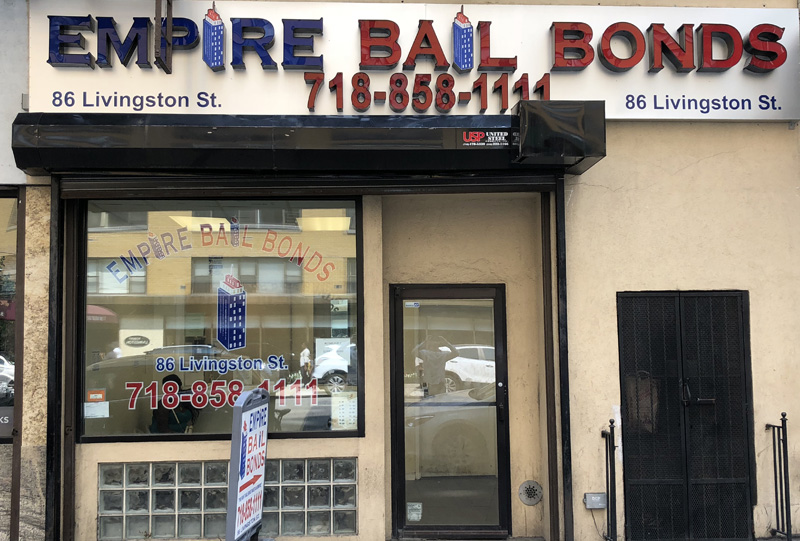Simplifying the Bond Process: Your Overview to Bail Bonds
Browsing the bail process can often feel frustrating, specifically for those unfamiliar with the numerous types of bail bonds and the steps included in safeguarding launch. Once apprehended, the subsequent bail hearing will certainly establish the economic obligations necessary for release.
Comprehending Bond Essentials
While the lawful system can usually show up challenging, comprehending the fundamentals of bail is vital for browsing the complexities of pretrial release. Bail functions as a financial guarantee that a defendant will appear in court for their scheduled hearings. When an individual is jailed, a court establishes the bond quantity based on several elements, including the nature of the crime, the defendant's criminal background, and the threat of trip.
Bail can take different forms, including cash money bond, where the accused pays the full amount upfront, or guaranty bonds, where a bond bondsman ensures the bail for a cost. If the accused stops working to appear in court, they forfeit the bond quantity, which can result in additional lawful repercussions.
In some instances, people might be released by themselves recognizance, suggesting they do not need to pay bail but needs to promise to return for their court dates. Recognizing these foundational principles is vital for defendants and their family members as they navigate the bond process, making certain informed choices are made throughout a difficult time.
Just How Bail Bonds Job
Understanding just how bail bonds work is crucial for any individual associated with the bail procedure. A bail bond is a legally binding contract in between a bondsman, the accused, and the court. When an offender is arrested, a judge establishes a bond amount meant to make certain the individual's appearance at future court hearings. If the offender can not manage to pay the full bond quantity, they can seek the services of a bondsman.
The bondsman normally bills a non-refundable cost, generally around 10-15% of the total bail amount. This charge represents the bondsman's payment for presuming the monetary threat connected with the bond. As soon as the fee is paid, the bondsman blog posts the full bail amount to the court, securing the defendant's launch from wardship.
For this solution, the bail bondsman might need collateral, such as building or properties, to mitigate possible losses if the offender stops working to appear in court. If the defendant does not attend the scheduled hearings, the bail bondsman deserves to recuperate the bail amount via lawful ways, which may include working with a fugitive hunter. Comprehending this process can help people browse the complexities of securing a bail bond properly.
Kinds Of Bail Bonds
After securing a bail bond, it is vital to identify that not all bail bonds coincide; they can be found in numerous types designed to match various situations and demands. One of the most typical type is the guaranty bond, which involves a bond bondsman that guarantees the complete bail amount to the court for a fee, typically around 10% of the complete bail. This is ideal for those that can not afford to pay the complete bond amount upfront.
Another kind is the cash bond, where the offender or their representative pays the complete bail amount in cash money directly to the court. When people have the economic ways and prefer to recoup their funds upon court look., this choice is often used.
Property bonds permit individuals to utilize realty as security for bail. bail bond company newark ohio. This needs a property assessment and can be complex, however it is advantageous for those that have important properties
Lastly, this content some jurisdictions supply personal recognizance bonds, where the accused is launched based upon a pledge to appear in court without any type of economic commitment. Understanding these kinds of bond bonds is crucial for making informed decisions in your scenario.
The Bond Refine Actions
Navigating the bail process includes a number of essential steps that can considerably affect the result of an offender's scenario. The procedure typically begins with the arrest, throughout which the person is taken right into safekeeping. When detained, the offender will certainly be educated of the fees and may have a bail hearing arranged, where a court will identify the bail amount based upon the severity of the criminal activity, trip risk, and criminal background.
After the bail amount is set, the defendant or their rep can contact a bondsman. The bondsman will evaluate the situation, explaining the terms of the bond and the costs entailed, which normally amount to a portion of the total bond. If an arrangement is gotten to, the bondsman will upload the bond with the court, enabling the defendant to be launched from guardianship.

Tips for Choosing a Bond Agent
Selecting a bail representative is a vital action that can significantly influence the bond process. It is important to pick an agent who not just understands the lawful complexities however also gives trustworthy support throughout this difficult time. Begin by researching qualified bail representatives in your area; ensure they have the required credentials and experience in managing your details situation.
A reputable bond agent should display professionalism, compassion, and openness. Do not wait to ask concerns regarding their charges, processes, and any kind of potential security needs.
In addition, consider the availability and responsiveness of the bail agent. An excellent representative ought to be obtainable 24/7, ready to supply support whenever necessary. Assess their communication style; an agent who listens and discusses plainly can make the procedure extra workable.

Verdict
In conclusion, browsing the bail procedure calls for a clear understanding of the numerous kinds of bond bonds and the procedural actions involved. Involving with an accredited bail bondsman is important for facilitating release while making sure compliance with court commitments.
Navigating the bond procedure can usually criminal bond really feel frustrating, specifically for those unfamiliar with the different types of bond bonds and the steps involved in safeguarding release.Recognizing exactly how bond bonds job is important for anyone entailed in the bond process. A bail bond is a legitimately binding agreement between a bail bondsman, the defendant, and the court.After safeguarding a bail bond, it is crucial to recognize that not all bail bonds are the same; they come in various kinds created to match various situations and demands. The most common kind is the surety bond, which includes a bail bondsman who guarantees the complete bond quantity to the court in exchange for a fee, generally around 10% of the overall bond.